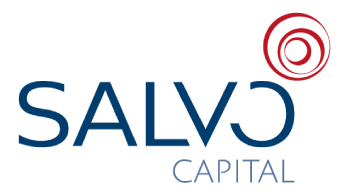To invest locally or offshore? That really isn’t the question
As a local investor who has faced a bumpy 2020 in financial terms, you may be looking to global markets to expand your investment horizons, with the hope of recouping some of the losses that you may have incurred in local markets this year.
Before you move your money offshore though, take a moment as Francis Marais, Head of Glacier Research weighs in and reminds us that offshore investing is not an end in itself. It forms part of an investment portfolio that has your needs and circumstances at its centre.
Uncertainty is not unique to South Africa
One should realise that currently uncertainty and economic headwinds are a global phenomenon. However, South Africa does face some of its own unique challenges. The open secret to investment success is healthy broad-based exposure to as many opportunities and as much potential growth as possible. This certainly entails some exposure to offshore assets, perhaps even a significant portion of your investment.
The open secret to investment success is healthy broad-based exposure to as many opportunities and as much potential growth as possible.
It’s about you
The ideal exposure, however, would depend on your own unique circumstances, your needs and your liquidity requirements. Here, your financial adviser plays a very important role to help decide on the most appropriate allocation. Principles such as diversification and long-term financial planning continue to be as relevant as ever, when making these types of decisions – and these principles can be fulfilled in local or global markets.
Packing a portfolio
Portfolio construction – the process of selecting assets and funds in an investment portfolio based on an investor’s risk-return profile – is an essential ingredient of investment success. This means that both local and global investing form part of a well-considered solution set.
Portfolio construction – the process of selecting assets and funds in an investment portfolio based on an investor’s risk-return profile – is an essential ingredient of investment success.
Here’s a checklist of things that you should consider when constructing your portfolio :
Markets move. There are myriad factors that impact them. Portfolio construction involves capturing optimal upside and minimal downside of markets, based on the fund performances contained in them, and these funds are subject to their own economic or political influences. Leave predicting the markets to the experts.
Your profile is key. Your appetite for risk plays an important role in the design of your portfolio. Establishing who you are – your current financial situation, your needs, your age, your future retirement income requirements – is critical information upon which your portfolio design will hinge.
Investing is a marathon not a sprint. While easy access to your money may be important to you in this time of economic uncertainty and possible loss of income, investing for the long-haul (at least five years) invariably offers the best investment outcomes.
Separate real information from noise. This is tricky as a lot of hype is passed off as valid news. Choose carefully the media channels that you follow, and even then, be circumspect about the information that you are exposed to. Fund performance is best monitored on a quarterly (not a daily) basis and it’s best to leave it to your adviser to keep an eye on the growth of your investments. This will minimise your anxiety.
Get help. A qualified investment adviser with a proven track record can play a critical role in designing the best portfolio that suits you and your lifestyle. They are likely to have access to data, research and industry knowledge that investors often are not privy to. Their expertise could be invaluable to successful investing.




